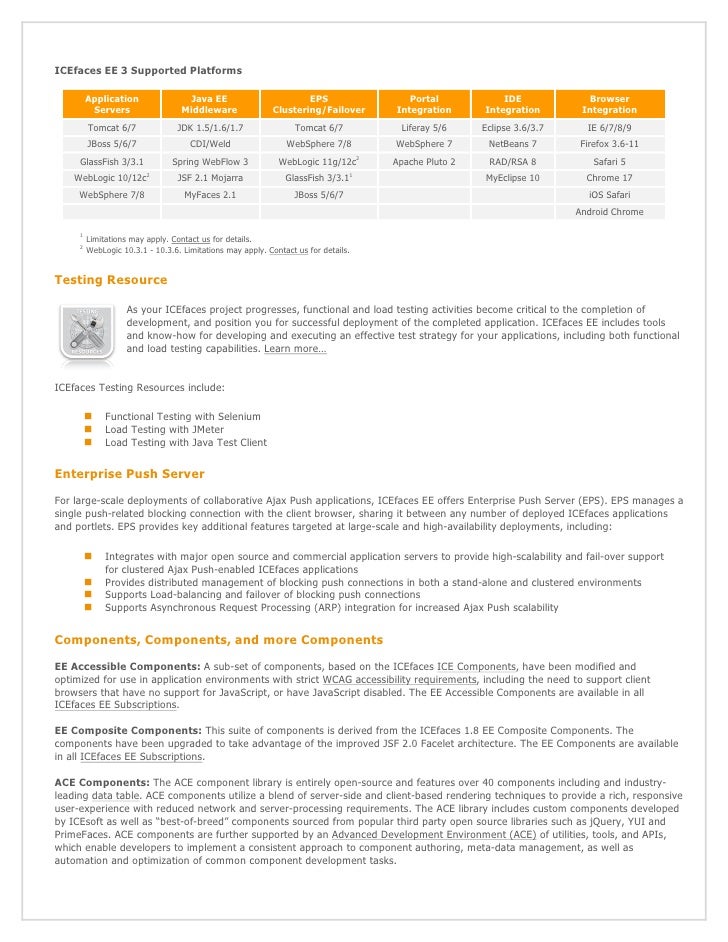
With JSF 2.0 and above, managed beans can be configured with annotations leaving the faces-config.xml file untouched.
#Jsf icefaces code#
Note: To remove the error in customer.java, delete references to the Payment object, as the ICEfaces tutorial doesn’t use it and code for it was not generated.

Generate Java interfaces: Selecting this option creates an interface class with a corresponding DAO implementation class. This allows easy access to entities from the DB using any property as a means of finding them. Generate precise findBy methods: Tells MyEclipse to generate findBy XXX methods where XXX pertains to each property on the entities that are reversed. This code wraps the JPA entity manager and makes using the entities and the DB very easy. Java Data Access Generation: Tells MyEclipse to generate DAO utility classes for you that allow you to save/find/update/delete the entities from the database right away.
#Jsf icefaces update#
Update persistence.xml: Similar to Hibernate you can list all the JPA entities you are using in the JPA configuration file. Select the following checkboxes:Įntity Bean Generation: Tells MyEclipse to generate plain Java classes that are annotated to be used as JPA entities Specifying the CUSTOMER table to be reverse engineered Select the CUSTOMER table, click Add, and click Next.This tutorial uses the MyEclipse reverse-engineering tools. Make a selection, click OK, and complete the wizard. Note: You have the option to use MyEclipse reverse-engineering tools or DALI entity generators. Right-click the project, and select MyEclipse>Generate Entities & DAOs.All build-path additions are prepared to be deployed and run on an app server.

Now the project has a fully configured JPA facet added to it, which includes JPA configuration information, DB Connection information, and all necessary JDBC and JPA libraries added to the project’s build path.
#Jsf icefaces driver#
Select MyEclipse Derby in the Connection field, select the Add driver library to build path and Override default schema from connection checkboxes, and choose CLASSICCARS from the Schema drop-down.
#Jsf icefaces download#
If no library is listed, click to download the appropriate library. If the JPA implementation type defaults to a User Library, select the library corresponding to the selected platform. Select a platform from the Platform drop-down.Switch back to the MyEclipse Java Enterprise perspective, right-click the project, and select MyEclipse>Project Facets>Install JPA Facet.Now that the DB Connection is set up, you can add JPA facets to the project so it can use tables and information from the DB Connection.


 0 kommentar(er)
0 kommentar(er)
